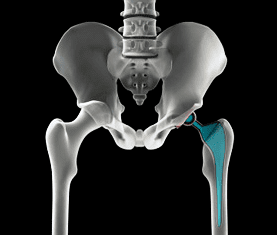Metal Hip Replacements: 20 Years Ago Regarding Problems
In a 1993 published study, 148 retrieved modular hip prostheses of mixed titanium cobalt and chromium were examined to determine if they had corroded while implanted in humans. Significant corrosion was observed and it didn’t matter whether the hips were metal or a combination of metal and ceramic or other combinations. Sixteen percent of necks and 35 percent of the heads in mixed-metal hips – fourteen percent of necks and twenty-three percent of heads for similar-metal – all showed corrosion ranging from moderate to severe and it appeared the corrosion progressed with time.
What’s unbelievable is that one of the lead authors again finds himself writing about dissimilar metal failure twenty years later. In a recent article published in the Journal for Bone and Joint Surgery, Joshua Jacobs goes back to his roots and again, twenty years later describes taper neck junction corrosion in Stryker’s new Rejuvenate hips system.
The conclusion of the 1993 article, published in the Journal of Biomedical Materials Research, is that because of the restricted environment in which the hip replacement sits, it is exposed to movement and repeated stresses causing a fracture of the oxide films. The tapered head that connects the ball onto the neck is susceptible of corrosion from the mechanics of movement. The two metal alloys (chromium and cobalt) were believed twenty years ago to be resistant to corrosion in the body. However, when the modular hip implants were retrieved, significant corrosion was seen in the head-neck taper where the cobalt-chromium femoral head comes in contact with the titanium or cobalt-chromium necks. That was a surprise.
One might ask themself why Dr. Jacobs still would be writing about this very same problem twenty years later. Well, despite well documented evidence that mixing metals in hip implant components is a bad idea, Stryker chose to design the Rejuvenate and ABG II modular implants using dissimilar metal connections. Within two years of its launch, Rejuvenate was recalled from the market because, not surprisingly, the components made of dissimilar metals were corroding causing patients to be poisoned. Dr. Jacobs’ most recent paper identifies the exact same failure mechanism for the Rejuvenate as he did in devices twenty years ago. Stunning. In the 1993 paper, Dr. Jacobs also describes patients who underwent revision and suffered adverse biological events such as tissue death, loosening of the implant, granulomas and heavy metal accumulation. All of these problems were present in the patients studied in 2013 as well as being the reason cited by Stryker when it recalled the device.
The 1993 paper called upon scientists to perform more research into the corrosive processes so that hips could be better designed and materials could be improved. That never happened.
If dissimilar metals have been a problem for at least twenty years, why do manufacturers continue to combine them in implants? Guess no one was listening.
It is hard to believe with this information clearly present in the literature scientists could not develop modern testing capable of identifying dissimilar metal connections that will fail before putting them in human beings.
If marketing is driving the quest for innovation, where is the Food and Drug Administration, the watchdog for public health and safety? The American Academy of Orthopaedic Surgeons says there are about 193,000 total hip replacements performed every year and that number in the U.S. is expected to double by the year 2030 as the baby boomer population ages.
Will we still be reporting on these failures 20 years from now?
Share This



